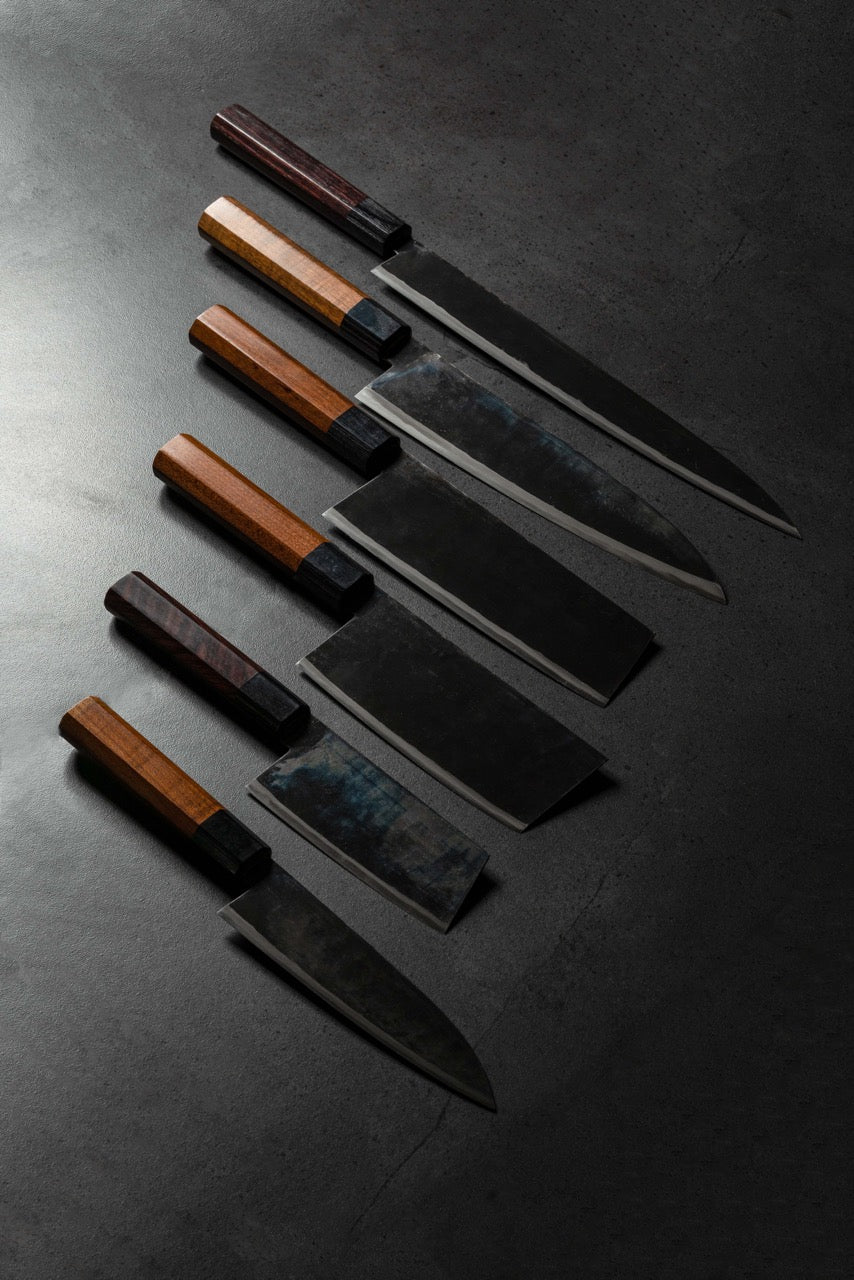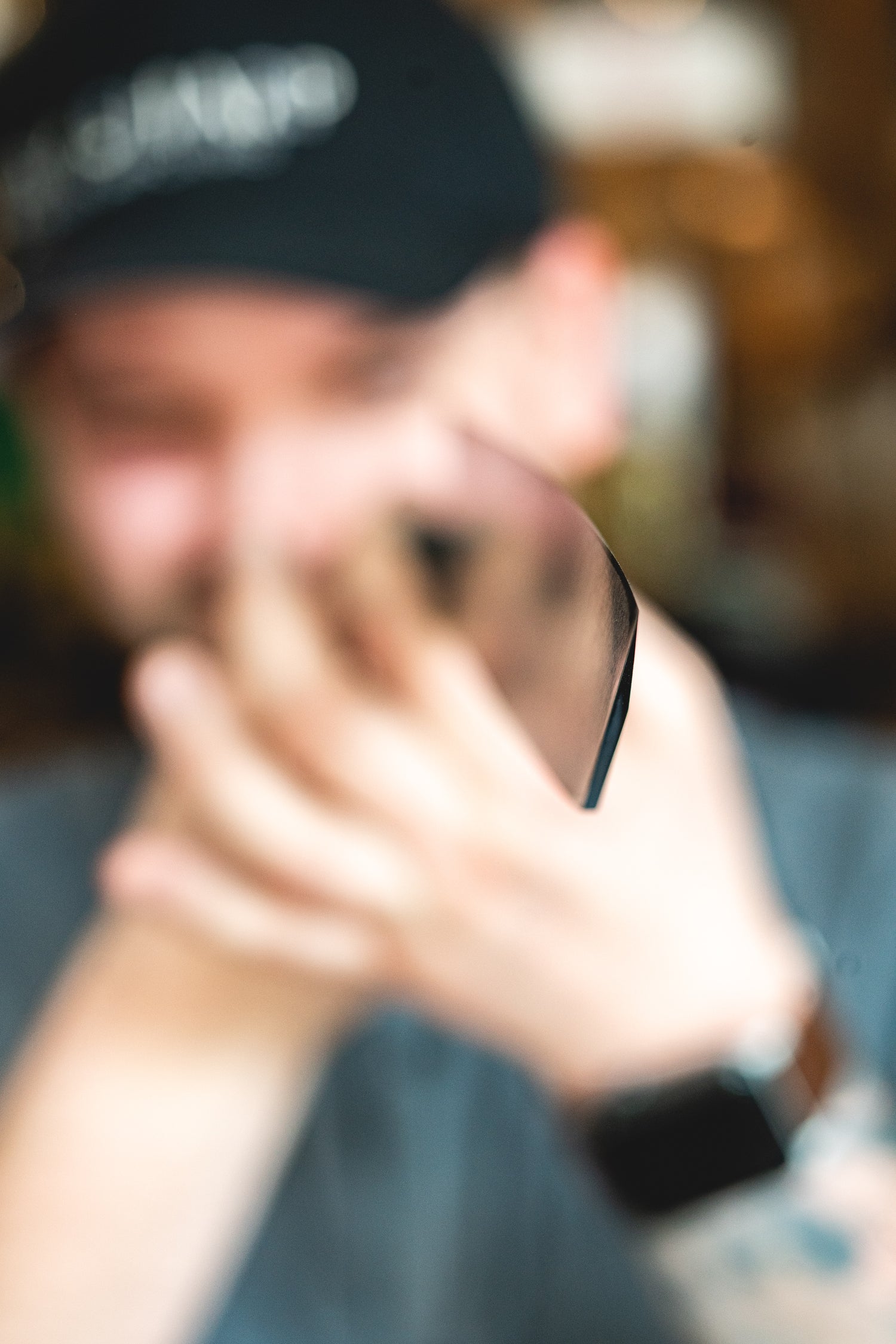
Kisuke Manaka Shirogami #2 Tsuchime Kurouchi Gyuto 210mm Warikomi
Description
The Japanese word Gyuto (牛刀) literally translates to beef sword. The gyuto is the equivalent of the Western chef's knife, and is designed to cut everything: vegetables, meats and fishes. It is made to be used with the push-cut method, lifting the blade between each cutting motion, or with the rocking motion method. It is important that the blade is straight upon impact with the cutting board to avoid damage to the knife edge.
Manaka Hamono Tanrenjo was founded in 1872 in the town of Kasukabe, Saitama prefecture. Kisuke Manaka (real name: Shunsuke Manaka), represents the 5th generation of Manaka blacksmiths, although he is not a direct descendant of the Manaka line, since he became interested in blacksmithing when he married into the Manaka family.
His father-in-law (4th generation) had not mastered the art of forging and was a knife merchant who relied on the reputation of the Manaka forge to sell blades not forged by himself. As his father-in-law was unable to teach him the art of forging, Kisuke Manaka taught himself using the tools and forge books left behind by his 3rd-generation step-grandfather. He learned to master all aspects of forging, and is best known for his mastery of the Warikomi method, which he even extended to stainless steels such as ats-34 and zdp-189.
Shirogami #2 translates to: Shiro (white) and Gami (Steel) and thus; white steel #2. It is named after the color of the package it was wrapped in at Hitachi Metals. The composition of this steel is very pure and contains almost only iron and carbon (1.05%-1.2%). It is in the hands of very experienced blacksmiths that one realizes the enormous potential of Shirogami #2. The quality of the heat treatment and a lower temperature forging are key elements that can allow Shirogami #2 to compete with and even surpass many modern steels. Try a Shiro #2 blade forged by Tanaka-san, Kisuke Manaka-san or Yoshikane Forge and you will see!
Tips for best results
Make sure your knife will deliver its absolute best by having it professionally sharpened at least once a year. Please note that our meticulously handcrafted Japanese knives are – unless otherwise noted – carbon steel and not stainless steel. To prevent rust, make sure the blades are patted dry – especially when cutting acidic items. Never cut frozen foods, hard products, bone, or twist the blade when using. Never soak in water after use or put in the dishwasher. After use, store in a cool, dry place and avoid high temperature fluctuations.
Our commitment to you – our customers
Warranty
Every knife we carry has a lifetime warranty from manufacturing defects and errors. For example, if the handle becomes detached or cracks appear after a few weeks of proper use. Or if there are any blade cracks from the edge to the spine. While such defects are indeed rare, they can occur. In such cases, we will exchange the knife in question or give you a refund. Each warranty case is different depending on the criteria, and we reserve the right in each and every case to evaluate the applicability of our lifetime warranty in the event of any manufacturing defects and errors.
After-Sales service
Do you get the feeling that your knife just can’t “cut it”?
Each knife we carry is supplied with a so-called “factory edge”. Our chef knife range comprises more than 200 different products. While all our handcrafted Japanese knives ship with a “factory edge”, ultimate blade sharpness can vary. If you feel that your knife’s blade edge is not performing to its full potential, feel free to contact us and we will provide you with professional sharpening for free!
Oops! What about the truly Unthinkable?
Was it just through a slight slip of the hand that your knife accidentally fell on the floor and damaged its tip and blade, or it was used to cut a hard, frozen product and chipped? Don’t despair, get in touch with us and we will solve the problem through our in-house, professional sharpening and repair service.
Simply contact us or visit our store to get a free estimate.









